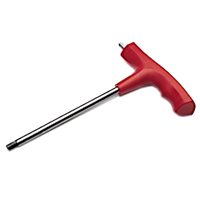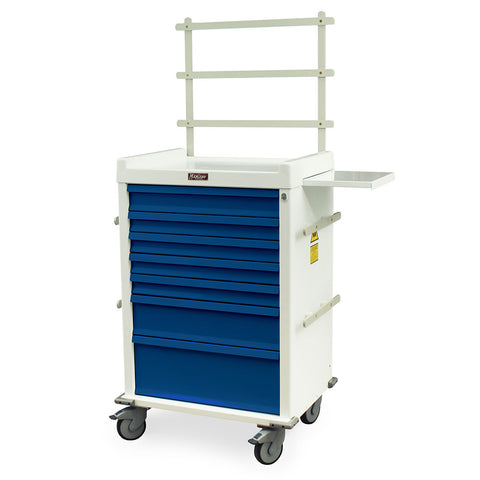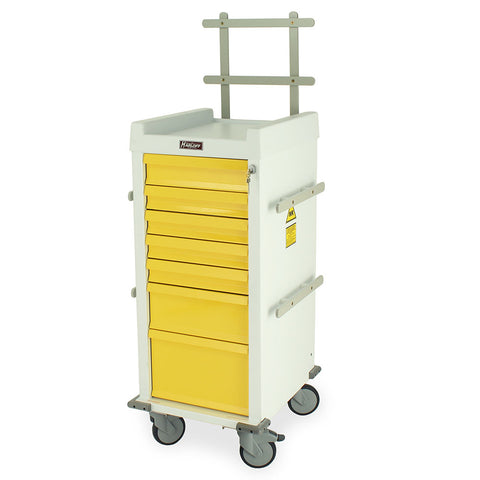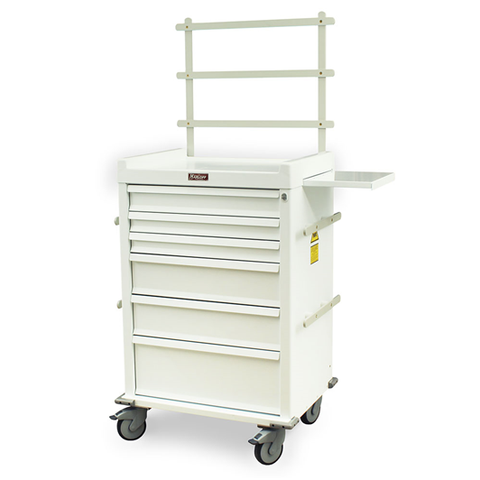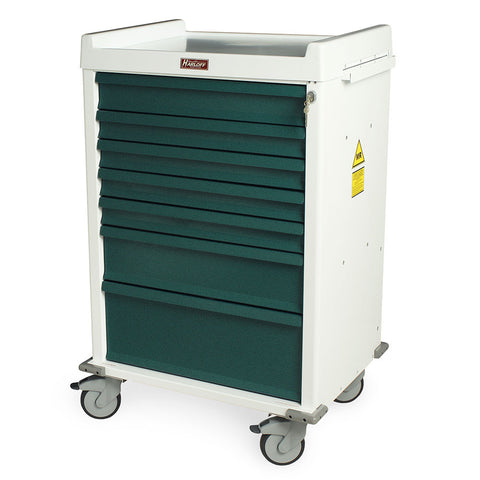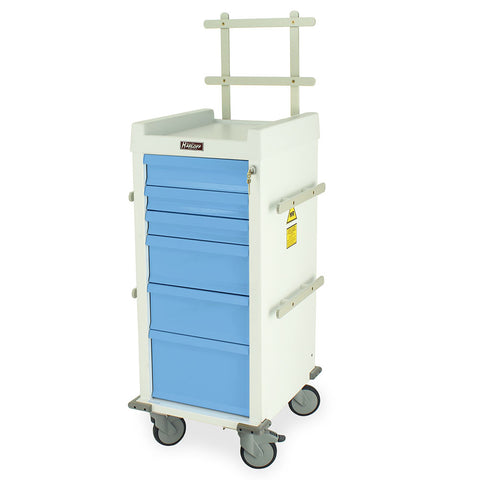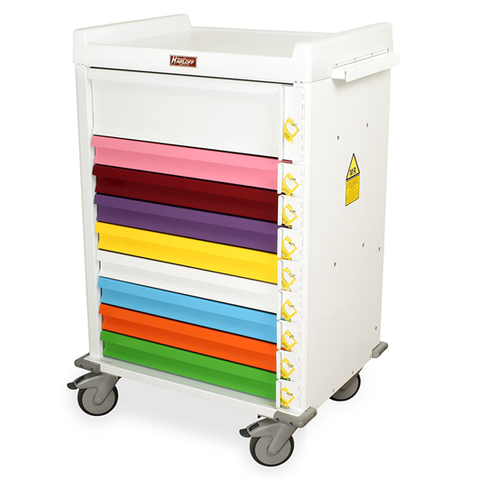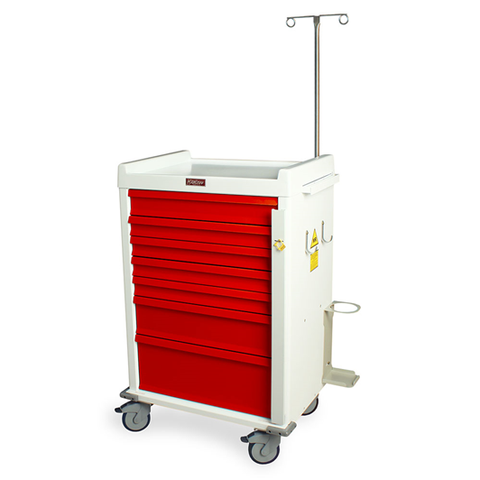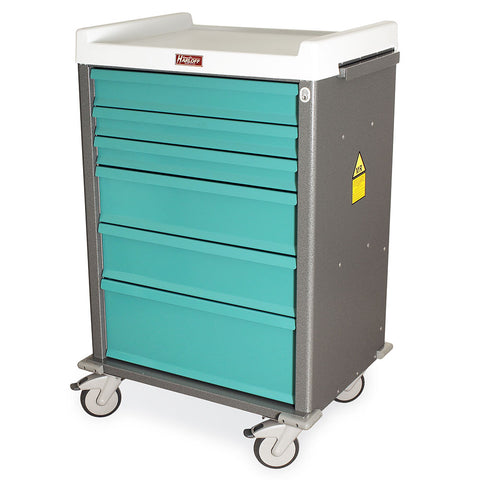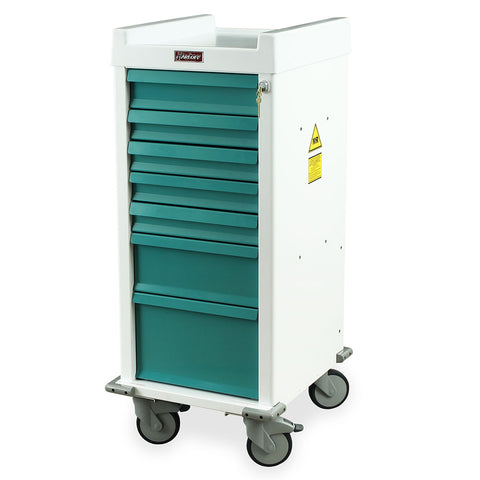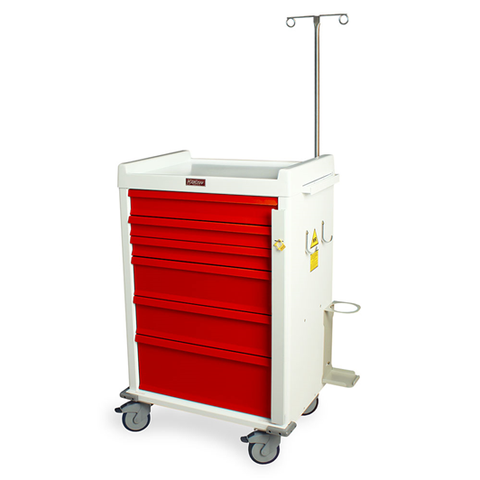Ensuring MRI safety requires more than following basic protocols. MRI environments pose unique hazards, including strong magnetic fields, projectile risks, RF heating, and interactions with implants. To mitigate these risks, facilities must use a comprehensive set of MRI safety equipment, spanning labels, detectors, signage, and screening tools.
MRI Med offers a full range of ASTM F2503-compliant safety products, including MR Safe, MR Conditional, and MR Unsafe labels, ferromagnetic detectors, permanent nonmagnetic signage, and door barriers. These tools help facilities maintain compliance, protect patients and staff, and prevent equipment damage.
For foundational knowledge, see MRI Safety Zones: Understanding the 4-Zone Model and Risk Mitigation.
Introduction to MRI Safety Equipment
MRI safety is critical for protecting patients, staff, and expensive imaging equipment. The strongest magnetic fields are located in Zone IV, the MRI scanner room, but risks extend throughout Zones II and III.
Proper MRI safety equipment ensures that:
- MR Unsafe items never enter high-risk zones.
- MR Conditional devices are used under specified conditions (e.g., field strength, SAR limits).
- Personnel and patients are adequately screened before entering controlled areas.
MRI Med provides products specifically designed to enhance MRI safety, ensuring compliance in environments with high-field MRI scanners.
Essential MRI Safety Equipment for Every Facility
ASTM F2503 Labels and Signage
Labels are the first line of defense against MRI hazards. ASTM F2503-compliant labels indicate whether a device or item is MR Safe, MR Conditional, or MR Unsafe. These labels are critical in ensuring that only approved items enter Zone III or IV.
MRI Med offers a full range of labels, including:
- MR Safe Labels for non-metallic, non-conductive equipment.
- MR Conditional Labels indicating required usage parameters (field strength, SAR, configuration).
- MR Unsafe Labels for items that should never enter MRI zones.
Learn more about label color codes and symbols in MRI Labels Demystified: Color Codes, Symbols, and What They Mean.
Ferromagnetic Detection Devices
Ferromagnetic detectors prevent projectile hazards, a leading cause of MRI accidents. They detect metal objects on patients, staff, and equipment before entering Zone III or IV.
MRI Med offers:
- Handheld Ferromagnetic Wands for quick screening.
- Walk-Through Ferromagnetic Detectors for more extensive facility coverage.
These tools are essential for MRI safety, particularly in high-field scanners where the risk of projectile incidents is greatest.
Safety Floor Stickers and Magnetic Signs
Visual cues like floor stickers and wall-mounted magnetic signs guide patient and staff movement, preventing accidental entry into hazardous zones.
MRI Med provides durable, permanent nonmagnetic floor and wall signs designed for high-traffic MRI environments. These tools complement labels and detectors to create layered risk mitigation.
See Using Safety Floor Stickers & Magnetic Signs for MRI Hazard Prevention for detailed placement guidelines.
Equip Your Team with Tools They Can Trust
Get high-quality, MRI-dedicated equipment that supports safer scans, better positioning, and smoother patient care.
View Trusted ProductsScreening Tools and Checklists
Screening tools are essential for identifying MR Unsafe items and ensuring MRI safety compliance. Laminated or digital checklists allow staff to track:
- Implants and medical devices.
- Personal items with potential magnetic content.
- Compliance with usage parameters for MR Conditional equipment.
Learn about other essential tools in Top MRI Safety Tools in 2025: From Labels to Ferromagnetic Detectors.
Equipment Organization and Maintenance
Proper storage and maintenance prevent inadvertent introduction of MR Unsafe items into high-risk zones. Best practices include:
- Clearly separating MR Safe, MR Conditional, and MR Unsafe equipment.
- Regular inspection of labels, signage, and detection devices.
- Storing MR Conditional equipment with documented usage parameters visible.
Staff Training and Awareness
Even with the best tools, untrained staff can compromise MRI safety. Effective training includes:
- Understanding ASTM F2503 terminology and symbols.
- Using ferromagnetic detectors and screening checklists.
- Recognizing and enforcing zone boundaries.
Common Mistakes and How to Avoid Them
Common errors include:
- Using outdated or missing labels.
- Ignoring MRI safety parameters.
- Poor signage placement or visibility.
Preventive measures include routine audits, staff retraining, and updating all equipment labels and signs using MRI Med products.
Best Practices for MRI Safety Equipment Management
- Implement a facility-wide MRI safety checklist covering labels, detectors, signage, and screening tools.
- Combine MR Safe, MR Conditional, and MR Unsafe labeling with ferromagnetic detection to create layered protection.
- Conduct quarterly audits to ensure compliance with ASTM and ACR standards.
- Regularly review and update MRI safety protocols for high-field scanners.
Conclusion: Ensuring Comprehensive MRI Safety
Having a complete MRI safety equipment checklist is critical for protecting patients, staff, and equipment. By combining labels, detectors, signage, and screening tools, and following MRI safety guidelines, facilities can prevent accidents and maintain regulatory compliance.
Explore MRI Med’s full line of MRI safety equipment to implement a comprehensive safety strategy today.
FAQs
1. What equipment is essential for MRI safety?
Essential items include ASTM F2503-compliant labels, ferromagnetic detectors, permanent signage, and screening checklists.
2. How do ferromagnetic detectors protect MRI facilities?
They identify metallic objects on patients, staff, or equipment before entering high-risk zones, preventing projectile incidents.
3. Where should MR Safe, MR Conditional, and MR Unsafe labels be applied?
Labels should be applied to all equipment entering Zone III or IV, doors, patient prep areas, and staff workstations.
4. How often should MRI safety equipment be inspected or replaced?
Quarterly audits are recommended, or after any significant equipment or layout changes.
